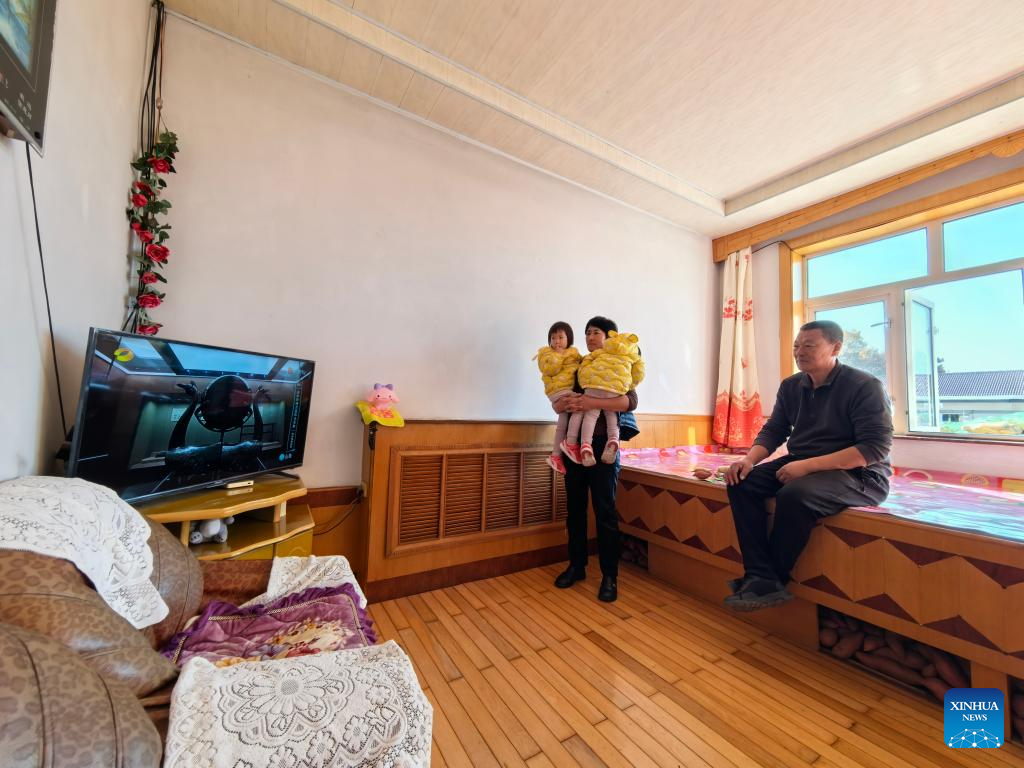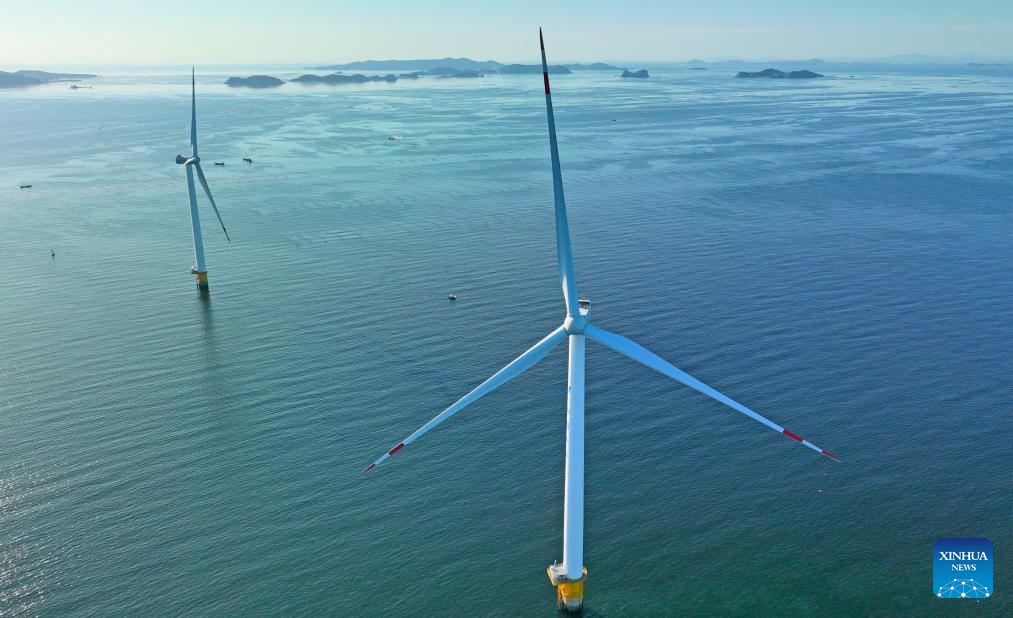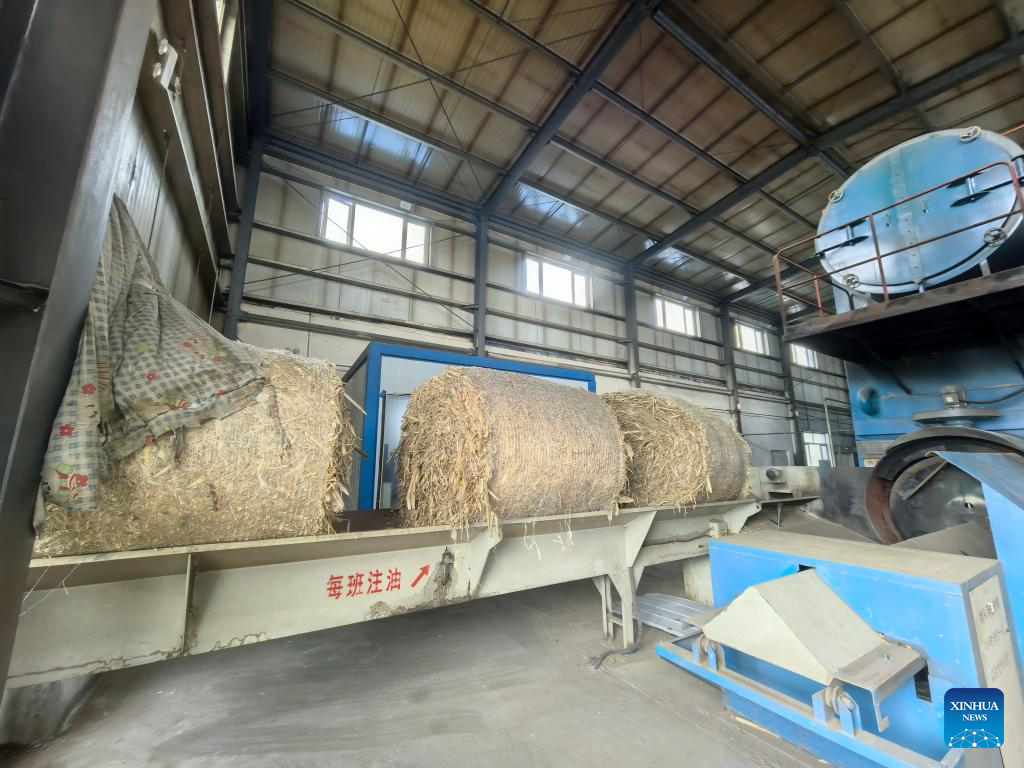China Focus: Green energy sparks a warmer winter in rural China
Source: Xinhua
Editor: huaxia
2025-11-13 13:00:00

A family enjoys warmth enabled by an air-source heat pump at Moshifang Village of Zhuanghe City, northeast China's Liaoning Province, Nov. 1, 2025. (Xinhua)
SHENYANG, Nov. 13 (Xinhua) -- Waking up in his house in Hongchang Village, Zhuanghe City in northeast China's Liaoning Province, 76-year-old Zhuang Derong can finally bid farewell to the coal-burning stove he has relied on for decades.
Zhuang used to rise before dawn every winter to clean and light his stove for warmth. This year, with a newly installed air-source heat pump, he is freed from the smoky, exhausting routine.
For many rural households in northern China, burning coal has long been the primary way to stay warm in winter, but it has also caused heavy air pollution and frequent safety hazards such as carbon monoxide poisoning.
In recent years, China has been promoting cleaner, safer and more cost-effective heating methods through technologies such as air-source heat pumps, biomass heating, and solar power, heralding cleaner skies and warmer homes across its vast rural regions.
Zhuang said that his new heat pump is not only more efficient but also much safer than the old coal stove. Powered by electricity, it absorbs heat energy from the outdoor air and releases it indoors, eliminating the risks associated with incomplete coal combustion.
In Liaoning, rural residents who switch from coal to electric heating can enjoy discounted electricity rates. "Electric heating would save me more than 300 yuan (about 42.3 U.S. dollars) compared with burning coal this winter," said Wang Yongchun, a villager from Maokui Village in Zhuanghe City who started using electric heating this year.
According to the local power supply company, over 1,130 households in Zhuanghe have been connected to electric heating systems so far this year, with the number steadily increasing.
Other rural residents in the province are also reaping the benefits of clean heating. Qi Shuhua, a local resident of Fuxin Mongolian Autonomous County, said her family now enjoys greater comfort and lower costs after switching to a centralized heating system.
Instead of coal, the system operates on a biomass heating network that serves four nearby towns, using corn stalks -- once considered agricultural waste -- as fuel. According to Qi, the system keeps her four-room bungalow above 20 degrees Celsius all day while saving several hundred yuan each winter.
In Guantao County, north China's Hebei Province, around 1.2 million-meter-long pipelines lie beneath a tranquil park lake. These pipelines store solar heat in the underwater facilities, providing heating for more than 20,000 local residents in winter.
Driven by supportive policies and technological advances, the clean heating rate in northern China's rural areas has seen a significant increase.
According to a white paper released by China's State Council Information Office last week, by the end of 2024, over 40 million rural households in northern China had completed clean heating upgrades, which raised the clean heating rate to 83 percent, nearly 20 percentage points higher than in 2020.
Reduced coal consumption has contributed to the return of blue skies across much of northern China. Data show that PM 2.5 concentrations in the Beijing-Tianjin-Hebei region have dropped by about 40 percent compared with a decade ago, with air quality significantly improved.
In northwest China's Qinghai Province, "solar-powered houses" equipped with photovoltaic panels and smart microgrid systems have provided residents of Tu'ergan Village, Huangyuan County, with stable and self-sufficient electricity.
"I never thought houses could generate their own electricity," said Yang Qinxiu, a 46-year-old villager. "Now our rooms are warm, and our daily power needs are fully met."
Qinghai, known for its long, cold winters, is also blessed with abundant sunshine. The province has vigorously developed solar and wind power to deliver "green electricity," benefiting more than 1 million residents over the past five years.
Yang Fuqiang, a researcher with the Peking University Institute of Energy, noted that while the clean heating campaign has achieved remarkable results, some regions still face challenges due to harsh climates and underdeveloped infrastructure.
Yet these green sparks scattered across the countryside mark a solid step in China's march toward its broader climate goals, as the country aims to peak carbon emissions by 2030 and achieve carbon neutrality by 2060. To reach these goals, the country continues to encourage local governments to explore new clean heating models, strengthen infrastructure and promote technologies tailored to local conditions. ■

An aerial drone photo taken on Sept. 13, 2023 shows offshore wind turbines in the waters of Zhuanghe City, northeast China's Liaoning Province. (Xinhua/Yang Qing)

This photo taken on July 25, 2025 shows bundled corn stalks kept at a biomass heating company in Fuxin Mongolian Autonomous County, northeast China's Liaoning Province. (Xinhua/Wu Jiangmin)



